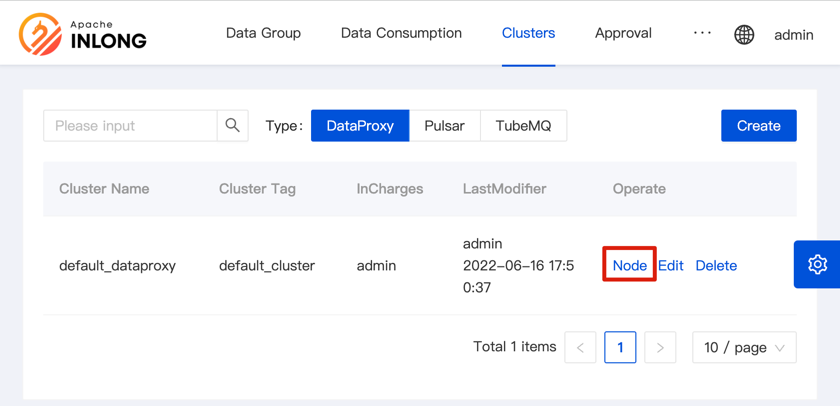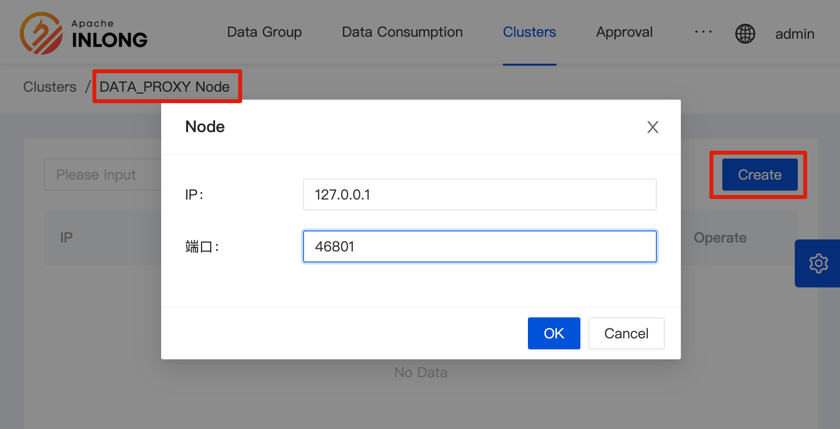Deployment
All deploying files at inlong-dataproxy directory.
Configuration
Configure InLong-Manager URL
configuration file: conf/common.properties:
# local IP
proxy.local.ip=127.0.0.1
# manager address
manager.hosts=127.0.0.1:8083
# audit proxy address
audit.proxys=127.0.0.1:10081
run
# Default using Pulsar to cache data, and the dataproxy-pulsar.conf configuration file is loaded.
bash +x bin/dataproxy-start.sh
# or
bash +x bin/dataproxy-start.sh pulsar
# If using Inlong TubeMQ to cache data
# bash +x bin/dataproxy-start.sh tube
check
telnet 127.0.0.1 46801
Add DataProxy configuration to InLong-Manager
After installing the DataProxy, you need to add the IP of the DataProxy service into the InLong-Manager.
Open the Inlong-Dashboard page (the default is http://127.0.0.1), and select to add a DataProxy cluster on the [Clusters] tab:

Click the [Create] button, and fill in the cluster name, cluster label, and responsible person in the pop-up box to save.
Note: [Cluster Tag] is a logical concept. Tags with the same name will be regarded as the same cluster.
For example, the DataProxy cluster and the Pulsar cluster with the same cluster tag belong to the same cluster.
Then add nodes to this DataProxy cluster - a DataProxy cluster can support adding multiple nodes:

Just fill in the IP and port of the DataProxy node.
